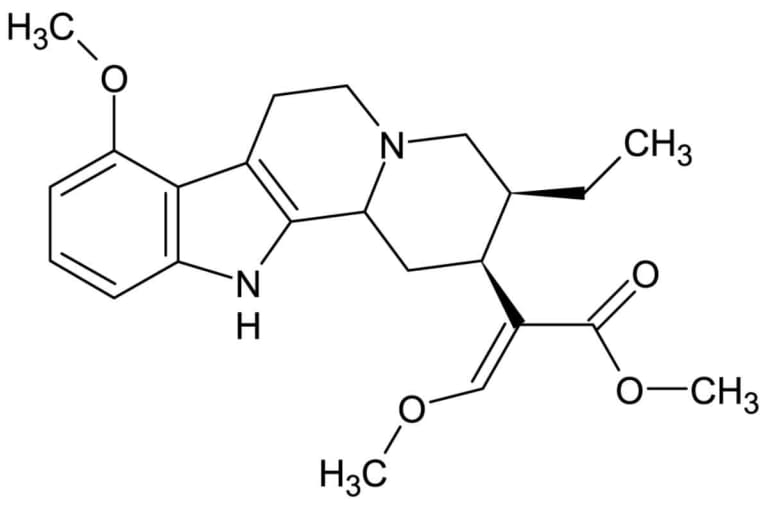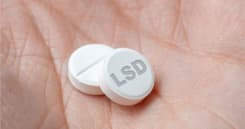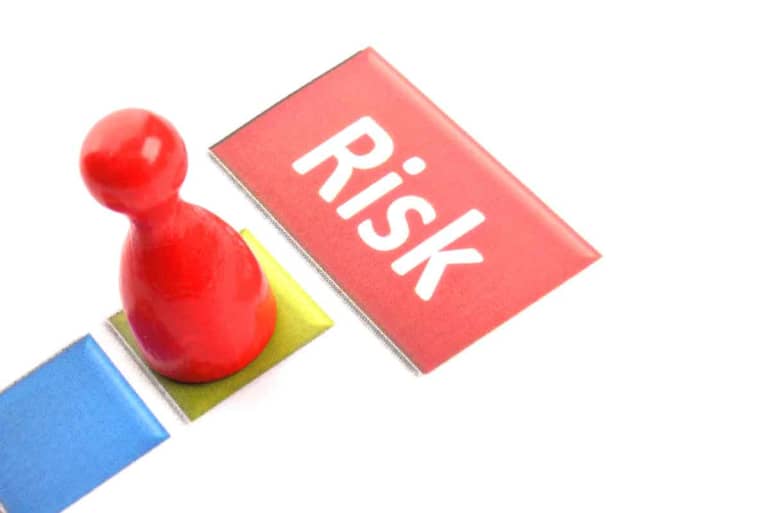If you’re familiar with health news or addiction recovery, you’ve most likely heard of kratom by now. Kratom comes from a tropical tree of the same name that’s native to Southeast Asia. The tree’s leaves contain compounds that cause mind-altering effects when ingested.
Growing media coverage over the past few years brought kratom into the public eye. The substance is often depicted as a safer, natural alternative to opioids. Both possession and use are legal throughout the United States. Still, the Food and Drug Administration recommends that consumers not use it.
What is Kratom?
What exactly is kratom? How did the drug come to be? Is it truly a safer alternative to opioids? Continue reading to learn about kratom, how it’s used, its effects, and more.

A Definition of Kratom
Kratom is a mind-altering substance derived from the leaves of a tree of the same name. Kratom trees are found in Thailand and as well as other tropical countries throughout Southeast Asia. It’s commonly used in the region for its energizing effects that combat fatigue and increase productivity.
Kratom is also used during traditional ceremonies in some forms of religion. In some areas, it’s used to treat certain medical conditions like pain or diarrhea, sometimes in place of using opium. In Western countries, many people use kratom for its mind-altering effects. It’s often used to help people manage and relieve their opioid or heroin withdrawal symptoms.
The Department of Health and Human Services recommended a ban on kratom in 2018, though. HHS suggested the Drug Enforcement Administration classify it as a Schedule I substance alongside heroin and LSD. The DEA never acted on their suggestion, though, and the substance is legal in the United States, though.
Some individual states and cities have banned kratom but it is still widely available for purchase online. It’s also found in supplement or vitamin stores, gas stations, and smoke shops throughout the United States. The substance sells as “not recommended for human consumption”, though, since it’s illegal to market it as a dietary supplement.
What is Kratom Made Of?
Kratom is extracted from the leaves of the tropical kratom tree. Some people in Southeastern Asian regions chew the leaves or brew them into teas. Dry powdered kratom can either be pressed into pills or capsules and also brewed into tea. Occasionally it’s extracted and made into a liquid product.
Another way people use the drug is by smoking the dried-out leaves. Sometimes people cook with the leaves and eat it in food. These two methods of ingestion are far less common than taking it in pill or capsule form, though.
How is Kratom Processed?
There are two compounds in kratom that interact with the opioid receptors in the brain: mitragynine and 7-a-hydroxy mitragynine. Sometimes people extract the compounds from the leaves to create a liquid form of the drug. More often, though, the leaves are simply dried out and used directly.
Unlike many other substances, kratom is a very straightforward substance. Very little processing is required to make the drug. Dried-out leaves from the trees can be made into various forms for use in different ways. From pills to powder to capsules, dried kratom leaves make for a versatile drug.

Cocaine is a drug notorious for its place in the clubbing and nightlife scenes of major cities throughout the world. What exactly is cocaine, how is it made, where does it come from, and what does it do? Learn more about the impact of cocaine on the body, on society, and more.
More info
Heroin is one of the most dangerous and harmful drugs available. It causes an alarming amount of deaths due to overdose each year yet use continues rising. What exactly is heroin and why is it that people use it? Learn more about the drug, its effects, and how to find treatment for addiction.
More infoWhere Does Kratom Come From?
Kratom, or Mitragyna speciosa, is an evergreen tree found in tropical regions of Southeast Asia. The trees are part of the coffee family, evident in the energizing properties that come from small doses of the substance. They can be found in countries including Thailand, Malaysia, Indonesia, Papua New Guinea, and Myanmar.
The drug comes from the leaves of the kratom tree. People in the region chew the leaves or brew tea from them directly. Occasionally a liquid form of the drug comes from deriving the active compound from the leaves. Kratom that’s available in shops or online is mostly a powdered form that comes from dried-up leaves.
When Did Kratom Come To the US?
Kratom has become a much more popular alternative to traditional psychoactive substances in Western countries over the past few years. The plant is native to Southeast Asia, though, so how did it make it to the United States?
The use of the drug is not a new phenomenon. People throughout countries in Southeast Asia have used kratom for centuries. It relieves drowsiness and encourages focus and concentration to assist with higher productivity.
There are also some medical benefits including its use as a morphine alternative in Thailand and an opium alternative in Malaya. Kratom has also been used in religious ceremonies for many thousands of years.
Much of the substance sold today is still likely imported from Southeast Asia. The European Monitoring Center for Drugs and Drug Addiction suggests that it’s likely cultivated in Indonesia. From there, the substance is dried then sent to distributors around the world for consumer purchase and use.
What Forms Does Kratom Come In?
In Southeastern Asia where the trees grow naturally, users most often chew the leaves directly. They usually chew 1 to 3 leaves at a time anywhere between 3 and 10 times per day. These users also brew tea directly from the leaves. Occasionally users will smoke the dried kratom leaves.
Outside these tropical regions, though, kratom is most often purchased in either capsule or powder form. The leaves are first dried out and crushed then they’re packaged into a product. Leaves are first dried out and crushed then they’re packaged into a product.
Capsules are the easiest way to take the substance. They’re pre-measured to ensure consistent dosing. Powdered kratom is less precise but allows for more versatility in use. People who use powdered kratom can mix it with water like a protein powder, brew it as a tea, or mix it into food.
Is Kratom Legal?
Despite the growing controversy surrounding the substance, kratom is still legal in the United States. The Drug Enforcement Administration has yet to classify it as a scheduled substance alongside drugs like heroin or cocaine. Though the effects aren’t as severe as these drugs, they still provide a comparable experience.
People can purchase and consume the substance according to federal law. A ruling by the Food and Drug Administration barred sellers from advertising kratom as a dietary supplement, though. Additionally, various cities and states have their own ruling against the substance.
Kratom is currently legal in 44 states. The remaining six (Indiana, Tennessee, Wisconsin, Vermont, Arkansas, and Alabama) classify it as a controlled substance. On a national level, legal access to Kratom is currently being debated and decided.
The legal fight began when dietary supplement companies applied for “Old Dietary Ingredient” status, which would allow suppliers to sell Kratom without restrictions. In response, the FDA, which has been historically opposed to natural or alternative remedies, urged the DEA to issue an emergency scheduling alert. The Telegraph notes that this alert is “an action taken when dangerous drugs have hit the streets, deaths have occurred, and the public’s safety is at risk.”
The DEA’s failure to substantiate the claim that Kratom was indeed endangering public safety or causing deaths led to public outcry. Once the US Congress applied pressure, the DEA was forced to withdraw the alert and open a temporary public comment period. They received over 10,000 comments before the comment period ended in December of 2016.
The DEA also requested an expedited scientific and medical review from the FDA. The results of that review and an ultimate decision could take months, especially with a new administration in the US. The American Kratom Association is leading the fight to keep Kratom legal and accessible to Americans as the nation waits on the FDA and DEA to move closer to a decision.
Are Kratom and Kava the Same Thing?
People often confuse kratom and kava. Though they share a few similarities, kava and kratom are not the same drugs. Both substances come from plants but kratom comes from a tropical tree and kava comes from the roots of a kava plant.
Kratom is more often used as a stimulant in smaller doses or an opioid-like drug in higher doses. It provides a similar calm euphoria experienced with other opioids like prescription painkillers or heroin.
Kava, on the other hand, is more known for its calming, relaxing effects. It is usually used to treat stress, anxiety, and insomnia. These calming effects are more similar to a sedative or a depressant, though, instead of an opiate.
What are the advantages of Kratom?
Proponents of Kratom argue that the supplement is a safer alternative to opioids that can be used to treat chronic pain, drug addiction, and more.
For example, Edward W. Boyer, MD, PHD, a professor of emergency medicine at the University of Massachusetts Medical School told WebMD of a case where a man successfully treated his opioid withdrawal with Kratom.
He explained, “Most people with opioid withdrawal have abdominal pain, diarrhea, dysphoria. This guy really only had a runny nose, and that is pretty remarkable. I’m not willing to say is great for everyone. I’m just ready to say that is pretty interesting, and it should probably be studied more in a controlled way.”
What are the dangers of Kratom?
Opponents warn that users should be hesitant to view this as a miracle cure. The DEA reports that Kratom is addictive, with painful and dangerous withdrawal symptoms. Several southeastern Asian countries have outlawed it due to these concerns.
Proponents disagree, arguing that any cases of negative side effects or addiction are due to coexisting conditions or drug abuse—not Kratom use alone. Further research is needed before we can know for sure.
In fact, the real danger may be in the lack of knowledge and regulation. There is no official drug label based on scientific studies that can make the user aware of the risks or how it may interact with other drugs.

Prescription opioids are a popular medication used to treat moderate and severe pain. They have developed a notorious reputation over the past two decades, though, for their incredible addiction potential. Learn more about what prescription opioids are and how they affect the people who use them.
More info
Methamphetamine is a strong illegal drug that causes a number of stimulating effects. It’s highly addictive with nearly a million active users each month. Plenty of misunderstanding surrounds the drug and its users, though. Learn more about methamphetamine and the impact it has on those who use it.
More infoChemistry of Kratom
Kratom use in the Western world has grown over the last 15 years but is still relatively new. The increase in use has led researchers to increase their efforts to identify active properties in the substance. Studies have increased scientists’ understanding of how the effects of kratom play out in a person’s body.

Currently, researchers have extracted over 25 different active compounds from kratom. Evidence shows that each of these compounds also have considerable pharmacologic effects. These compounds include mitragynine, 7-hydroxymitragynine, speciocilatine, paynantheine, and more.
Mitragynine and 7-hydroxymitragynine are the two most well-understood compounds so far. They are responsible for the opioid-like effects that make kratom use appealing. Both have effects on the body’s central nervous system but 7-hydroxymitragynine is the more potent of the two. They interact with mu-opioid receptors in the body to produce their effects.
Lower doses of kratom cause effects similar to stimulants. Taking the substance in higher doses, though, causes effects closer to those of opioids. It relieves pain and also causes opioid-like reactions in the intestines and other organs. Along with its effects on the central nervous system, the substance appears to have anti-inflammatory properties, too.
The chemistry of kratom is so comparable to opioids that physical dependence develops over time, too. Studies show that animals who receive doses of kratom for 5 days or more develop dependence. They also experience withdrawal symptoms once the drug is removed.
Other Names for Kratom
Kratom isn’t as mainstream or popular as most other substances. There aren’t as many other names for kratom as there are for the many different illicit substances available. Still, there are some alternate names for kratom including:

- Ketum
- Ithang
- Biak
- Kakuam
- Thom
Kratom Myths and Facts
Since kratom use is not as widespread as other substance use, there are many myths surrounding the drug. Lack of understanding can have dangerous consequences, though, so it’s good to know these kratom myths and facts.

Myth: You can’t get addicted to kratom
Some people believe you can’t get addicted to kratom. According to research, though, you can develop a dependence on and possible addiction to the drug. Like other drugs, not everyone who uses kratom will become addicted. It’s important to realize that addiction is a serious risk when using kratom regularly, though.
Fact: Kratom is not approved by the FDA
Kratom is not an FDA-approved drug. The FDA hasn’t banned it outright and the DEA hasn’t added it to the list of controlled substances. Still, kratom is not an FDA-approved drug. The Administration banned suppliers from selling it as a dietary supplement. It’s not considered safe to use and they recommend that humans not ingest the drug.
Myth: Kratom is safe for use compared to opioids
Many people use kratom as an alternative to opioids. They believe that it’s safer to use than opioids because it’s a natural substance. It must be a better substitute since it comes from a tree. Kratom is not a safe alternative or substitute for opioids, though. It’s another drug that can become a problem when use gets out of control.
Fact: You can experience kratom-induced withdrawal symptoms
Kratom withdrawal symptoms are a serious risk that comes with heavy use. The drug causes many opioid-like effects while using it. This also means it causes reactions like opioid withdrawal symptoms when you stop using it. Kratom-induced withdrawal symptoms can range from mild to severe depending on many different factors.
Why People Use Kratom
With all the risks that come with the drug, why do people use kratom? Many believe it’s a safer option than using other opioids like prescription painkillers or heroin. They think that it’s okay to use it since it’s a natural substance, unlike many opioid drugs.

There are two main reasons why people use kratom:
- Recreational use
- Withdrawal management
Another group of people uses kratom for managing their opiate withdrawal symptoms. Withdrawal management is one of the main reasons kratom became so popular over the past decade. Some individuals find the opioid-like effects of kratom make it easier to detox themselves from their addiction to harder drugs.

LSD, also called acid, is a popular hallucinogenic drug known for its psychedelic properties. Learn more about LSD, its effects, risks of use, and treatment option.
More info
What are the differences between sadness and depression? Learn more about depression, a mood disorder that affects nearly every aspect of a person’s life.
More infoWhat is Kratom Used For?
Kratom has a few different uses depending on where you are. It’s often still used traditionally in Southeast Asia. People in countries throughout this region use kratom for purposes from work to medicine to religious ceremonies.
Again, the kratom tree is part of the coffee family. The substance functions as a stimulant when taken in small doses. Workers chew kratom leaves for the burst of vigor they provide which gives them extra energy to get through their workday.
In higher doses, kratom functions like an opioid. It provides similar pain-relieving effects as well as feelings of calm and relaxation. It also aids with gastrointestinal distress, much like other opioids. This makes it a popular alternative to opium in some areas in Southeast Asia.
Kratom also sees use as part of some traditional religious ceremonies. Like ayahuasca or peyote, kratom is a revered tradition in the practices of some in the region. Other times it sees use as part of the therapeutic practice.
In the Western world, though, kratom use is mainly recreational. It’s readily available for purchase both in-store and online which makes it an easily accessible high. People use it as an alternative to high-powered opioids like heroin or prescription painkillers. Some also use it to manage withdrawal symptoms when detoxing from these powerful drugs.
How Does Kratom Work?
Kratom causes a few different effects, both physical and psychological. The exact effects depend on the amount used. Remember, small amounts act as a stimulant while large amounts act as a sedative.
Mild doses of kratom cause effects including:
- Improved mood
- Bursts of energy
- Increased attention and alertness
- Increased talkativeness
- Decreased appetite
- Increased libido
Larger doses of kratom lead to effects like:
- Pain relief
- Drowsiness
- Calmness
- Relaxation
- “Dreamlike” state
- Cough suppression
- Mild euphoria
Euphoria is one of the main draws of hard opioid drugs. Feelings of euphoria caused by kratom tend to be less intense than those caused by other drugs. Still, people seek out kratom for recreational use because it’s so easy to purchase and legal to possess.
How Does Kratom Affect the Brain?
The two main active compounds in kratom, mitragynine and 7-hydroxymitragynine, both interact with opioid receptors. This causes the opioid-like effects that make them a reasonable alternative to those types of drugs. There are also more than 20 other active compounds that researchers are currently aware of.
Isolated kratom compounds interact with the brain, causing both analgesic and antinociceptive effects. These opioid-agonizing compounds cause kratom to affect the brain similar to the ways other opioid drugs do. It’s the main reason people turn to it as a way to self-medicate withdrawal symptoms.
Kratom causes similar effects that people seek out. This means it also causes those less-than-pleasant effects that opioids are known for, too. People can develop a dependence on kratom and experience withdrawal symptoms just like they can with other opioids.
Despite the current understanding of the substance, much of it comes from animal testing. More human research needs to be done. There is still plenty to learn about how kratom affects the brain and what its exact impact is. Increased numbers of studies will lead to a deeper knowledge of the substance and how it interacts with the human brain.

Learn more about OxyContin, a powerful prescription opioid used to treat severe, long-term pain. It’s also a popular drug for recreational use and abuse. What is OxyContin? Uses, Side Effects, Contraindications, Dangers, and More.
More info
Cocaine is a drug notorious for its place in the clubbing and nightlife scenes of major cities throughout the world. What exactly is cocaine, how is it made, where does it come from, and what does it do? Learn more about the impact of cocaine on the body, on society, and more.
More infoEffects of Kratom
Kratom has varying effects depending on how a person uses it and how much of the drug they use. People take the substance in many ways, from chewing the leaves straight to brewing them in a tea. It’s most often consumed orally. Some try smoking kratom but this causes very mild effects, if any at all, so most avoid consuming it this way.

Taking low doses of kratom causes stimulant-like effects. Workers in Southeastern Asian countries use these low doses to increase alertness and productivity. High doses of kratom cause sedative effects. These effects are similar to opiates and opioids which makes high doses common for recreational use.
Stimulant Effects
Kratom causes stimulant-like effects when used in lower doses. They are similar to a low-powered amphetamine high, like Adderall or cocaine. Some of the stimulant effects of kratom use include:
Increased Energy
Small amounts of kratom cause increased energy, much like drinking a few cups of coffee. The increased energy that comes with use makes it easier to get more done in a smaller amount of time.
Heightened Alertness
Kratom causes heightened alertness and increased awareness. It causes people to feel more attentive to their surroundings and connected to what they’re doing or working on.
Increased Sociability
Increased sociability is another stimulant effect of kratom. Smaller doses of the drug make users more talkative, social, and interested in or willing to interact with others.
Sedative Effects
Kratom causes sedative effects when used in higher doses. Brewing a stronger tea or drinking multiple cups, taking more than a few capsules, can lead to these sedating effects. People who use kratom as a substitute for opioids take these larger amounts to achieve similar effects.
These sedative effects of kratom use also cause people to use it to manage their opioid addiction. Since the drug interacts with opioid receptors in the body, much like other opiate drugs, kratom causes similar reactions. Effects caused by ingesting higher doses of the drug include:
Drowsiness
Drowsiness is one of the most common effects of high-dose kratom use. The drug causes users to feel calm, relaxed, and sleepy, much like they do when using other sedative drugs.
Decreased Pain
The sedative effects of kratom use include decreased pain. This is why some regions use the substance as an alternative to opium or morphine: it has a strong capability to decrease the user’s sensitivity to pain.
Euphoria
Euphoric sensations are one of the strongest draws of opioid drugs. Higher doses of kratom cause feelings of euphoria in some users. The euphoria caused by kratom is not as strong as the euphoria experienced with harder drugs, though.
Dreamlike State
The combination of drowsiness, euphoria, and decreased pain causes high doses of kratom to put users in a dreamlike state. Most recreational users aim to reach this space when using the drug for enjoyment.
Side Effects of Kratom
Like most other drugs, kratom use also comes with some unpleasant side effects. Not everyone who uses the drugs experiences all of the following effects. Some of the common side effects of kratom use include:

- Itching
- Chills
- Sweating
- Dry mouth
- Tongue numbness
- Nausea
- Vomiting
- Constipation
- Loss of appetite
- Increased urination
Some people experience more severe side effects of kratom use in addition to those listed above. Occasionally, using the drug may cause serious effects like:
- Difficulties breathing
- Hallucinations
- Seizures
- Thyroid problems
- Liver damage
- Delusions
- Psychosis
Someone experiencing any of these side effects should seek immediate medical care. While they may not be life-threatening, they still pose the risk of causing unexpected long-term effects. Medical professionals can ensure their safety in the event of any possible serious side effects of kratom use.

Substance use disorder is a progressive condition that affects millions of people across the United States. Learn more about Substance Use Disorder, Causes, Signs and Symptoms, Treatment, and more.
More infoDangers of Kratom
Kratom has a reputation in some spaces as a safer alternative to hard opioid drugs. There is little to no evidence to back up these claims, though. On the contrary, many government agencies insist on people not using the drug. The dangers of kratom aren’t even entirely clear because such a small amount of research on the drug exists.

Using drugs of any kind is never a good idea. Drugs with very little knowledge and next to no regulation surrounding them are not safe to use. And even though it’s considered a “natural” substance, kratom is no different. The DEA calls the substance a “drug of concern.” Various reports reveal one-off, anecdotal examples of the dangers of kratom use.
What are some of the dangers of kratom use?
Is Kratom Dangerous?
Firstly, kratom is a dangerous drug because there is little control over its production. The FDA Commissioner, Scott Gottlieb, MD, has explained serious concerns regarding the safety of any products containing kratom. Many companies have come under fire for their production practices over the years.
The FDA issued an alert to U.S. import officials back in February of 2014 in response to the rise in demand for kratom. They gave officials permission to detain any imported kratom-related bulk dietary ingredients of dietary supplements. The FDA has also demanded recalls on various batches of kratom from companies across the country.
The Administration issued a mandatory recall in April of 2018 for all food products containing powdered kratom produced, processed, packed, or stored by Triangle Pharmanaturals LLC. The company initially refused to follow the suggested voluntary recall requested before.
Not long after Triangle’s run-in with the Administration, another manufacturer based in Missouri came under fire. They were forced to recall and destroy all dietary substances containing kratom that came from their facility.
Individual toxicity cases exist, too. Bruce Chabner, MD, clinical director at Massachusetts General Hospital Cancer Center discussed a patient he saw. He took kratom to deal with stress and experienced a serious injury to his liver. His case of liver toxicity is one of the multiple reported cases caused by kratom use.
Why Can Kratom Be Dangerous?
The lack of evidence surrounding any claims made by kratom manufacturers makes it dangerous. No one conducts quality control over any manufacturing processes. The FDA has no approved uses of kratom, therapeutic or otherwise. It’s not supported as an alternative to opioids and no research exists to back the substance.
There are plenty of harmful, unapproved products that make it into the hands of consumers. The drug is available for purchase online so anyone can find, buy, and consume these unapproved items. These forms of kratom can be dangerous because no one knows what exactly is in them.
In February of 2018, the Centers for Disease Control and Prevention linked a Salmonella outbreak to kratom. The outbreak spread across 41 states, made 199 people sick, and lead to 50 hospitalizations. Although no one died from the Salmonella outbreak, they connected it to the herbal drug. There’s no knowing exactly what each batch contains!
Can a Person Overdose on Kratom?
Unfortunately, there is evidence that a person can overdose on kratom. U.S. poison control centers have received a 10-fold increase in calls related to kratom from 2010 to 2015. The FDA is also aware of at least 36 deaths reported that involved kratom.
A report published in August of 2020 outlined the effects of a kratom overdose in a 15-year-old patient. She was hospitalized after she ingested 45 capsules containing 500mg of the drug. Effects of kratom overdose included:
- Dry mouth
- Dizziness
- Restlessness
- Palpitations
- Nausea
- Vomiting
- Tachycardia
- Tremors
As researchers continue studying the effects of kratom, understanding of kratom overdose will rise as well. Doctors and researchers alike have so little knowledge about the drug. Limited research should serve as a deterrent when considering using kratom.
Can Kratom Cause Withdrawal?
Since the drug interacts with opioid receptors in the body, kratom causes withdrawals. The withdrawals are similar to those experienced during opioid detox. Some of the effects of kratom withdrawals include:
- Cravings for kratom
- Abdominal cramps
- Nausea
- Vomiting
- Diarrhea
- Sweats
- Insomnia
- Blurry vision
- Decreased energy levels
Again, researchers are still looking into the withdrawal effects of kratom. They do know that patients experience detox like they do with other opioids but don’t quite understand the extent. Individual reports also reveal that kratom use and dependence causes withdrawals when quitting.
Medically Supervised Detox
Can Kratom Cause Withdrawal?
Kratom interacts with opioid receptors in the brain the same way other opiates do. It causes similar effects which also means that kratom causes withdrawals. People who use the drug heavily or for long periods build up a tolerance to the substance. These individuals will experience physical and psychological withdrawal symptoms when they stop using it.
The effects of kratom are not the only thing similar to opiates. Kratom withdrawal symptoms are similar to opiate withdrawal symptoms, too. Some of the symptoms of withdrawal from the substance include:
- Agitation
- Irritability
- Anger
- Hostility
- Insomnia
- Aggression
- Emotional changes or reactions
- Runny nose
- Insomnia
- Muscle aches
- Jerky movements
Addiction to Kratom
Many people use kratom because they believe it’s a safer alternative to opiates. Others use it to alleviate opiate withdrawal symptoms because it causes similar effects. Regardless of the reason for use, people think kratom is safer because it’s not as addictive of a substance. Some even think kratom addiction isn’t possible. But can you develop an addiction to kratom?

Is Kratom Addictive?
Before thinking the substance is a good alternative to opiates, you should know whether kratom is addictive. All forms of the drug interact with your brain the same way that opiates do. Just like opiates, kratom activates the brain’s opioid receptors. It causes the same pain relief, pleasure, and sedative effects that harder drugs like painkillers and heroin do.
Since it works on the same parts of your brain and causes similar effects, kratom is addictive. If you abuse kratom or use it for long periods you’ll develop a tolerance. This means you need to use more of the drug to achieve the effects you’re looking for. The longer you use it the more dependent you become.
People who develop a tolerance are at a greater risk of developing a kratom addiction. Though the drug might not cause effects as strong as other opioids, they’re still significant enough to be addictive. Once you’re addicted to kratom, you’ll experience withdrawal symptoms when you try to stop using it.
Why Is Kratom Addictive?
Think of the way opioids such as heroin and prescription painkillers are addictive. Users find themselves hooked to the pleasurable feelings that these drugs cause. Kratom is addictive because it interacts with the same receptors in the brain that opioids do. It causes similar feelings of calmness, relaxation, and euphoria.
People turn to kratom because it has the same effects as opioids while not being a controlled substance. They may start using it to relieve their opioid withdrawals but often find themselves hooked to this new substance instead. Since kratom is both accessible and legal, though, it’s the perfect combination for an addictive opiate alternative.
How Do You Treat Kratom Addiction?
It’s alarming when someone starts using kratom to overcome their opioid addiction but then finds themselves addicted to a different drug. Thankfully, there are ways to treat kratom addiction. Addiction treatment facilities offer programs to people with substance abuse problems of all kinds, including kratom addiction.
The type of treatment necessary for kratom addiction depends on a few factors:
- Severity of the substance abuse problem
- Whether you’re mixing kratom with other drugs
- Age
- History of substance abuse
- Overall physical and mental health
There are a few different types of programs available for those seeking treatment. Inpatient rehab is a residential option for those who need 24-hour structure and support. Intensive
outpatient programs make treatment available to those who don’t have the availability to commit to a full-time program.
For example, if you’re battling a severe kratom addiction or mixing it with other substances, you’ll need the assistance of an inpatient program. If you’re able to stay drug-free while living at home, an outpatient program is a great choice for you.
Where Can You Treat Kratom Addiction?
Are you looking for the best option for kratom addiction treatment? Hawaii Island Recovery is the premiere residential substance abuse facility located on the Big Island of Hawaii. We offer informed, comprehensive treatment that helps you build and sustain a life of long-term recovery. Our individualized approach to treatment considers your specific needs from the moment you reach out. Whether you’ve attended treatment before or it’s your first time trying to stop using drugs, Hawaii Island Recovery is here to support you. We promise you’ll never have to feel alone in your addiction again.
Get Addiction Treatment
If you or a loved one need help, call Hawaii Island Recovery toll-free right now.
866-390-5070 Hawaii Island Recovery
Hawaii Island Recovery 










